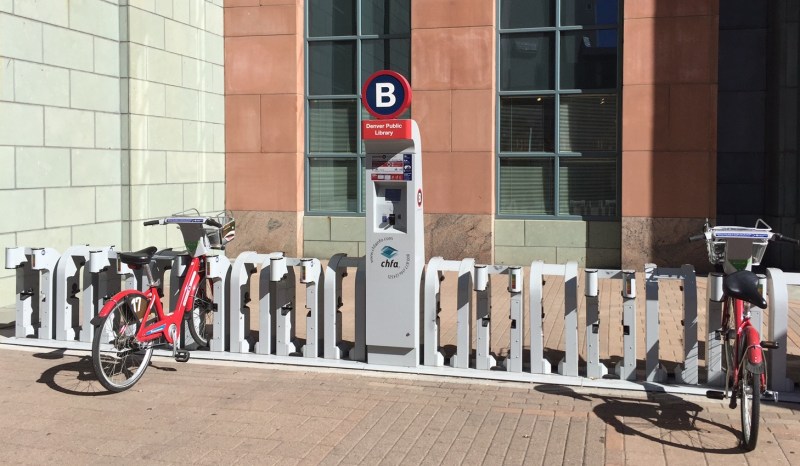B-Cycle Replaced Plenty of Car Trips in 2016, But Ridership Fell

The number of B-Cycle trips fell for the third straight year in 2016, to 354,652, according to a statement from the bike-share company. That’s 8,350 fewer trips than 2015.
One bright spot: 47 percent of bike-share trips replaced car trips — a greater share than ever before. The data constitutes a trend that has steadily risen since 2012, when only 35 percent of B-Cycle trips replaced driving. It also tells us that bike-share has a lot of potential to take even more cars off the road. Still, because overall ridership dipped, the number of bike-share trips that replaced car trips fell by 295 in 2016.
The National Association of City Transportation Professionals measures the success of a bike-share system by the number of trips per bike per day. B-Cycle weighed in at 1.3 trips per bike per day last year, down from 1.4 in 2015. The most successful bike-share systems, in cities like Paris, New York, and Mexico City, see a rate of 5 and above.
For bike-share to work well, stations should be close together and cover a lot of ground, according to NACTO:
Placing bike share stations uniformly close together over a large area is one of the best ways to ensure that a city’s bike share system will be a real transportation option for a wide demographic of users. Conversely, a low-density system, with only a few stations within a walkable distance, will see lower ridership.
A high density of stations throughout the city would mean B-Cycle would always be a short walk from every origin and destination. Of course, that costs money. And though the Denver City Council verbally prioritized a citywide B-Cycle system last year, nothing happened on that front.
It’s clear that B-Cycle takes cars off the road. But Denver won’t unlock bike-share’s potential as a robust transit option if the city doesn’t step in and invest more, or enlist a sponsor with deep pockets.


